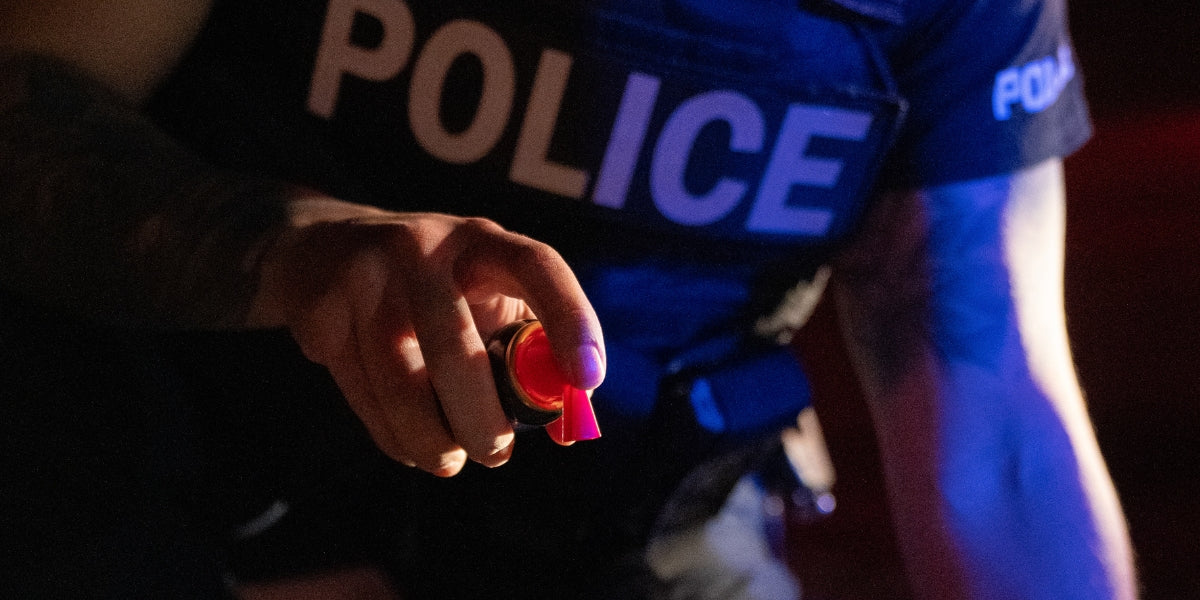
Best Trauma Care Products for Police Officers in High-Risk Situations
|
|
Time to read 4 min
|
|
Time to read 4 min
When a life-threatening injury occurs, every second matters—especially for police officers who are often the first on scene. Whether it's a gunshot wound, car crash, or violent confrontation, having the right trauma care tools on hand can make the difference between life and death.
This article breaks down the must-have first aid solutions for law enforcement and introduces SEAL hemostatic spray, a next-generation product that simplifies bleeding control in the field.
While EMS teams are trained and equipped to deliver advanced medical care, they may not always be first on the scene. In mass casualty incidents (MCIs), shootings, or high-speed chases, police officers often become the first medical responders. That means carrying effective, easy-to-use trauma supplies isn’t optional—it’s essential.
According to the American College of Surgeons , uncontrolled hemorrhage is the leading preventable cause of death in trauma. Properly equipping officers with bleeding control tools can significantly reduce fatalities.
Understanding the types of trauma officers face helps dictate the tools they need. Common injuries include:
Gunshot wounds to extremities, torso, or junctional areas (groin, neck, armpit)
Stabbings or slash wounds during physical altercations or arrests
Blunt force trauma from vehicle accidents or falls
Lacerations from glass, fences, or industrial equipment
Thermal injuries or chemical exposure during riot control or rescue efforts
Blast injuries in tactical or terrorist-related events
Each of these scenarios requires rapid bleeding control, airway protection, and injury stabilization—making compact, versatile gear a necessity.
One of the most life-saving tools for limb hemorrhage, tourniquets like the XT1 Extremity Tourniquet – Tactical Tourniquet and SOF-T are:
Lightweight and compact
Operable with one hand
Proven to control arterial bleeding effectively
Pro tip: Officers should carry one tourniquet on their person—preferably on a belt, vest, or thigh rig—and keep a spare in their go-bag.
Used to pack deep wounds and apply compression, these include:
Israeli Bandage: Combines gauze and elastic wrap for direct pressure.
OLAES Modular Bandage: Includes a built-in occlusive plastic sheet for chest wounds.
Celox or QuikClot Gauze : Impregnated with agents that speed up clotting.
These tools are essential for deep bleeds and junctional wounds—but require training and time to apply effectively.
Chest injuries are high-stakes. Penetrating wounds can cause tension pneumothorax, which can be fatal if untreated.
Devices like HyFin Vent Chest Seals or Halo Seals allow:
Air to escape (vented), reducing internal pressure
Easy application on wet, sweaty, or hairy skin
Officers in active shooter or urban conflict zones should always carry at least two chest seals.
Officers may encounter unconscious victims or those with airway obstructions due to trauma. Tools like:
Nasopharyngeal Airways (NPA)
Oropharyngeal Airways (OPA)
…are key in maintaining oxygen flow until EMS arrives. Bound Tree Medical offers various sizes and training resources for these adjuncts.
Though small, these items play a critical role:
Trauma shears : Cut away clothing or gear
Nitrile gloves : Protect both the officer and the patient
Sharpie marker : Record time of tourniquet application—vital for tracking ischemia duration
Traditional hemostatic tools rely on pressure or packing and often create heat when applied (exothermic reaction). But there's a better solution:
SEAL is the first and only FDA-cleared aerosolized chitosan spray for external bleeding control. It works within seconds—sprayed directly onto the wound—and requires no packing, no pressure, and no advanced training.
Aerosolized chitosan : Accelerates clotting naturally
No exothermic burn : Safer than kaolin-based powders
Works on junctional wounds : Groin, neck, underarm—where tourniquets don’t
Cold spray effect : Calms burns and trauma without causing pain
Peels off with saline : Allows for secondary care without disrupting the clot
Compact and tactical : Easily fits into a vest or thigh pouch
SEAL has been field-tested in:
The Ukraine conflict
Israeli border medical units
Rural African trauma clinics
Major U.S. cities including Baltimore and Chicago
| Feature | Traditional Agents | SEAL Hemostatic Spray |
|---|---|---|
| Application Method | Manual wound packing | Point-and-spray |
| Time to Apply | 1–3 minutes | Under 10 seconds |
| Burn Risk | Yes (kaolin-based) | No |
| Wound Moisture Retention | Can dry tissue | Preserves wound bed |
| Removal | Cut or irrigate | Washes with saline |
| Ease of Use | Requires training | Intuitive and fast—even one-handed |
Recommended kit contents:
✅ XT1 or SOF-T Tourniquet
✅ Pressure Bandage (Israeli or OLAES)
✅ Hemostatic Gauze (Z-fold)
✅ 2x Chest Seals (vented)
✅ NPA Airway
✅ Trauma Shears
✅ Nitrile Gloves
✅ Sharpie Marker
Optional Add-Ons : Emergency mylar blanket, eye shield, burn gel, mini flashlight, duct tape
Police departments across Texas, Maryland, Arizona, and Colorado are already integrating SEAL into their trauma protocols.
Request a SEAL demo for your team
Receive sample SOP language for departmental review
Pilot the product with your instructors or training officers
Order in bulk with grant assistance or through your distributor
Law enforcement is a high-risk, high-stakes profession. Officers don’t just face threats—they respond to them. With proper trauma care training and tools like SEAL Hemostatic Wound Spray, every officer can become a lifesaver.
🛡️ Ready to upgrade your trauma kit? Contact us for quotes, samples, or custom recommendations.






